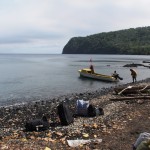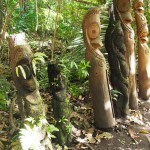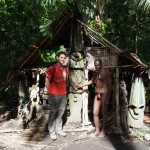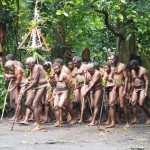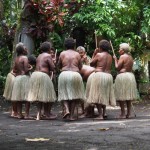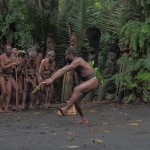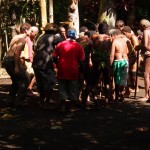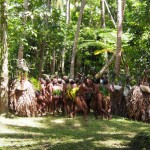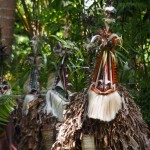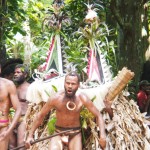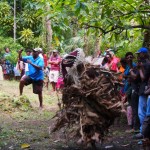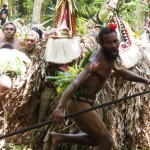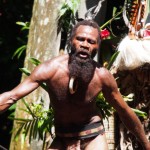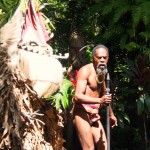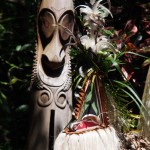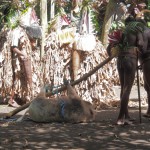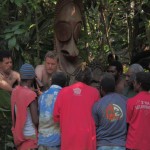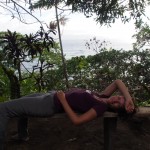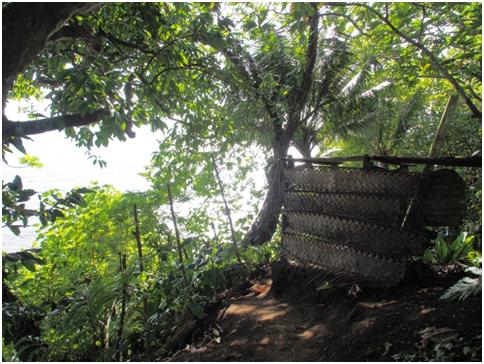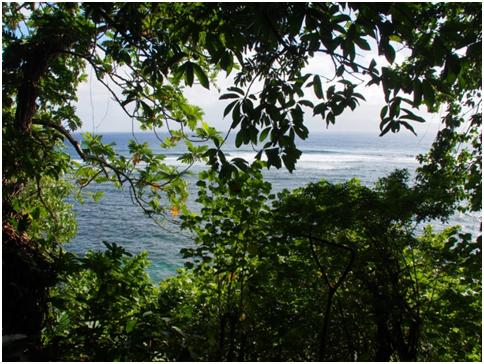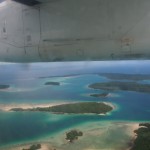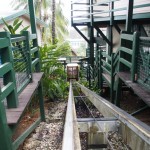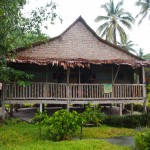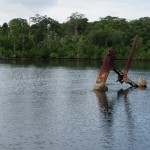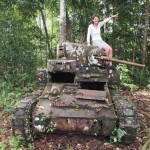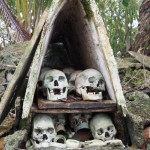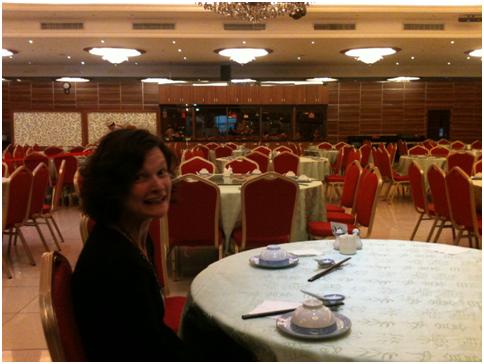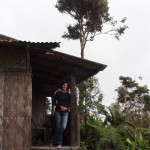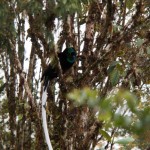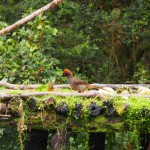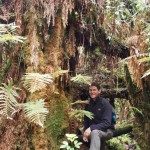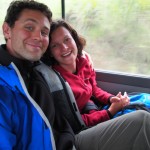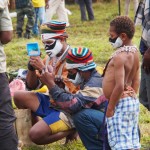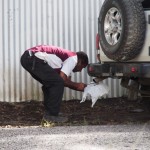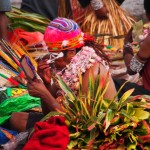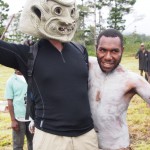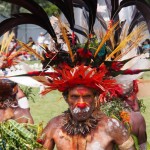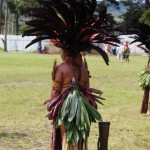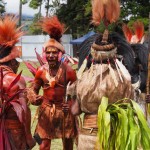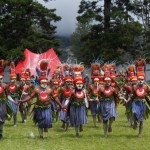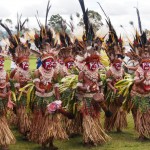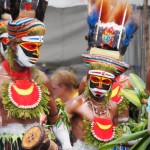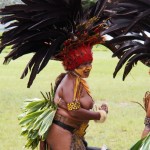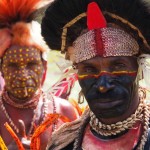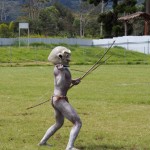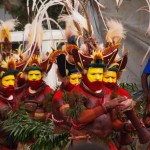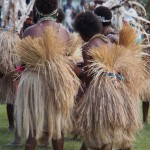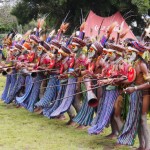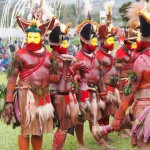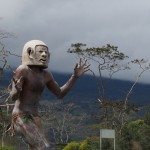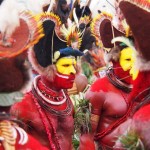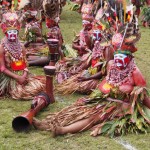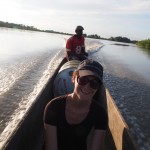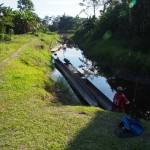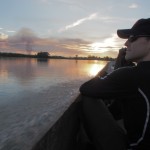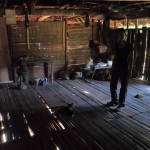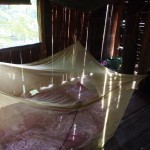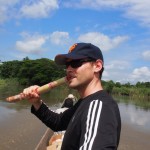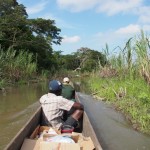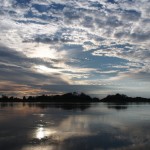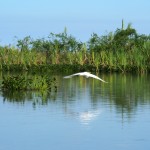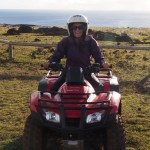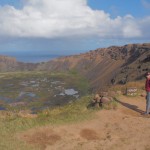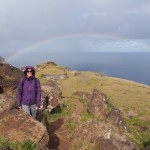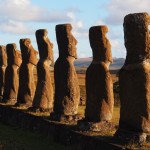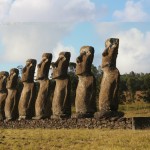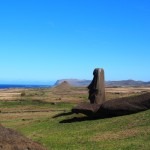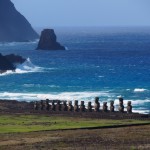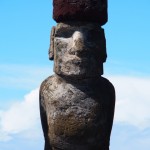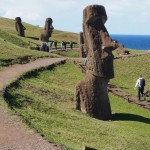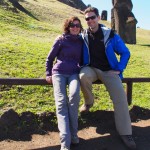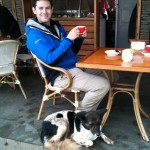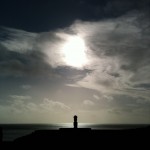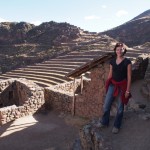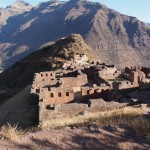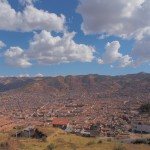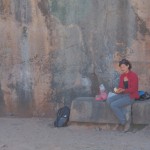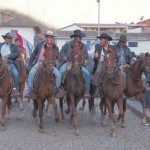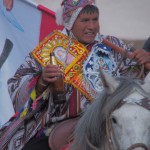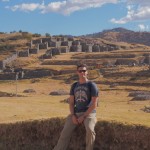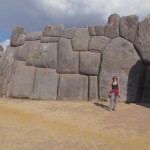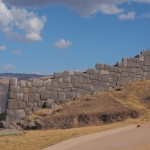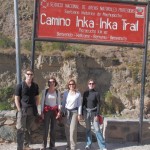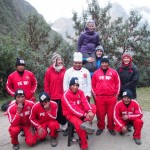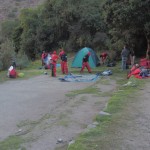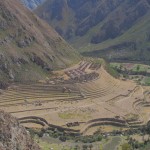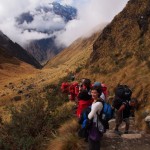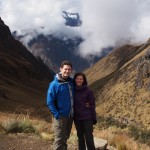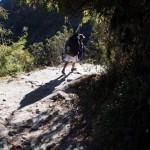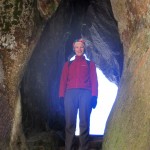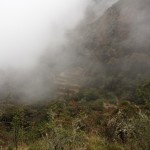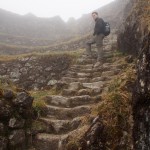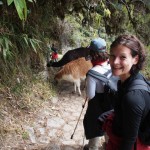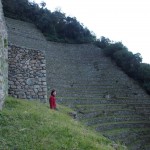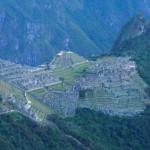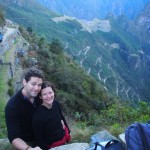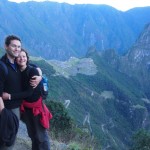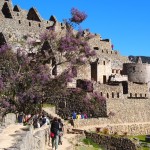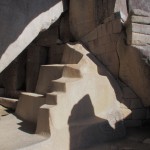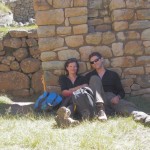As entrances go, that of Chief Sekor of Olal village, North Ambrym, into our lives was pretty memorable – striding towards us through the rainforest, clad only in a namba (waist belt and banana leaf penis sheath – see photos) and grasping his chieftain’s stick. We very firmly were not in Kansas any more. Where the hell were we and how the hell did we get here?!
We didn’t really know what to expect from Vanuatu. It’s well known amongst Australians as a very-slightly-more-adventurous-than-Bali honeymoon destination, with enough 5 star waterfront resorts to shake a stick at. But equally one of our fellow travelers in PNG had spoken glowingly of the still active kastom culture prevalent in the outerlying islands, and this really hooked us – the Mt Hagen show had been so incredible that we knew we wanted to see more. So (obviously), we googled what to do with ourselves in our 2 weeks there, and came across an entry for the “Back to Our Roots” festival in Ambrym, one of the country’s more kastom-oriented islands – contact Chief Sekor of Olal village for further information. Which we duly did (for future reference, one contacts chiefs nowadays via mobile phone and the appropriate way to address them is, simply, as “Chief”), to be wooed with the promise of Chief-ordained boat transfer from the airport and a place to stay (in the Chief’s village no less. Actually in his guest bungalows, but I’d rather avoid the word bungalow. Chief Sekor was a pretty imposing chap whilst bungalow conjures a vision of an aging Surrey golfer clad in slacks). All sounded pretty interesting but we hemmed and hawed a bit – the internal flight schedule meant the festival would need to take a big chunk of our available time in Vanuatu and there’s not THAT much else to do on Ambrym. Hagen fuelled, however, we decided to go for it.
Chief Sekor’s entrance made us pretty confident we’d made the right decision, and that was BEFORE we saw the dancing. Or heard about the pig.
Yep, the pig. As we kicked back with a nightly cup of kava (see tasting notes) we were informed that the festivities of the next few days would include a pig killing. Well, ok, not unusual in these parts. And that the pig would meet its end by being ceremonially clubbed to death (as per tradition) – by one of our fellow tourists. Wow. This was a surprise – not least to Patrick, the Sydney based financial analyst to whom that honour fell (unlike us lucky but lazy layabouts, Patrick had spent the last 6 months in correspondence with Chief Sekor planning out his holiday, and the festival, in some detail and the two had built up quite a rapport). The pig killing in effect raised Patrick to the status of Chief Sekor’s tribal brother. We were all pretty excited – and to be honest more than a little apprehensive – about the next day’s events.
The festival itself was wonderful but rather hard to describe. You can see a little from the photos and the video – but this was about as far from the Hagen show as a South Pacific tribal kastom event can be. There were about 10 tourists, and maybe 100 or so locals, gathered in a traditional clearing, lined with tree fern carvings and dappled with shade. The setting, the hypnotic drumbeat, the singing, the pounding dancing, all combined into a magical and heartfelt experience. The dances were clearly an active part of tribal life – the kids here learn them when they’re tiny and all can perform the steps by heart without pause – which doesn’t sound that impressive, maybe, until you realise that some of these dances go on for nearly an hour. In fact, the primary dance (the Rom dance – in the photos it’s the one with the masked and cloaked creatures) is one of the key mechanics through which a man can “grade take”, ultimately allowing him to become a village or even area chief – the other main mechanic being the killing of large numbers of pigs, in particular pigs which have been hand reared for 10 or more years to develop tusks which grow in a complete circle. Yep, being a pig round these here parts carries some responsibility.
As for the pig killing? Patrick looked dignified and rather brave in his namba, falling into the rhythm of the event with grace. But yes, it’s pretty upsetting to see a ceremonial clubbing – the pig arrives hogtied and fully aware of its impending doom, and the clubbing is enough to inflict pain (pigs really do squeal) but not death, leaving a slightly sour taste in this pampered Westerner’s mouth.
I’ve rarely, if ever, felt further away from home … but that was an overwhelmingly positive feeling. Roll on, new experiences.
- Isolated, moi. Olal is just 1 hours plane ride and 3 hours by motorboat from the (tiny) nation’s capital
- Traditionally, all kastom events take place in this sacred clearing, a truly beautiful space
- Chief Sekor & James by his house – as Chief, he cooks here too avoid threat of poison. No, really
- The first dance. Call me sheltered, but first dances have not hithertofore involved 20 near-naked men with sticks…
- The ladies’ dance. James will need counselling after all this elderly naked lady flesh
- We never really found out what this dance signified. Looks like learning to swim, but surely not……
- James joins in the fun. Who says white guys can’t dance
- The Rom dance, mainly used to allow a man to grade take
- The actual mask design is a closely guarded secret of each Chief
- These guys are the main movers of the dance – the primadonnas, I guess
- The Hurter is a key part of the dance, running amok and beating anyone who gets in his way with his stick
- The dance lasts an hour or more and these guys give it BEANS
- Exhaustion setting in
- Chief Sekor standing strong
- Mask AND tamtam (slit drum). Artistique!
- The pig’s entrance was a close rival to Cheif Sekor… losing only ‘cos of the whole hogtied thang
- Ceremonial pig clubbing – harder than it sounds
- Well, a girl’s gotta relax some time!

